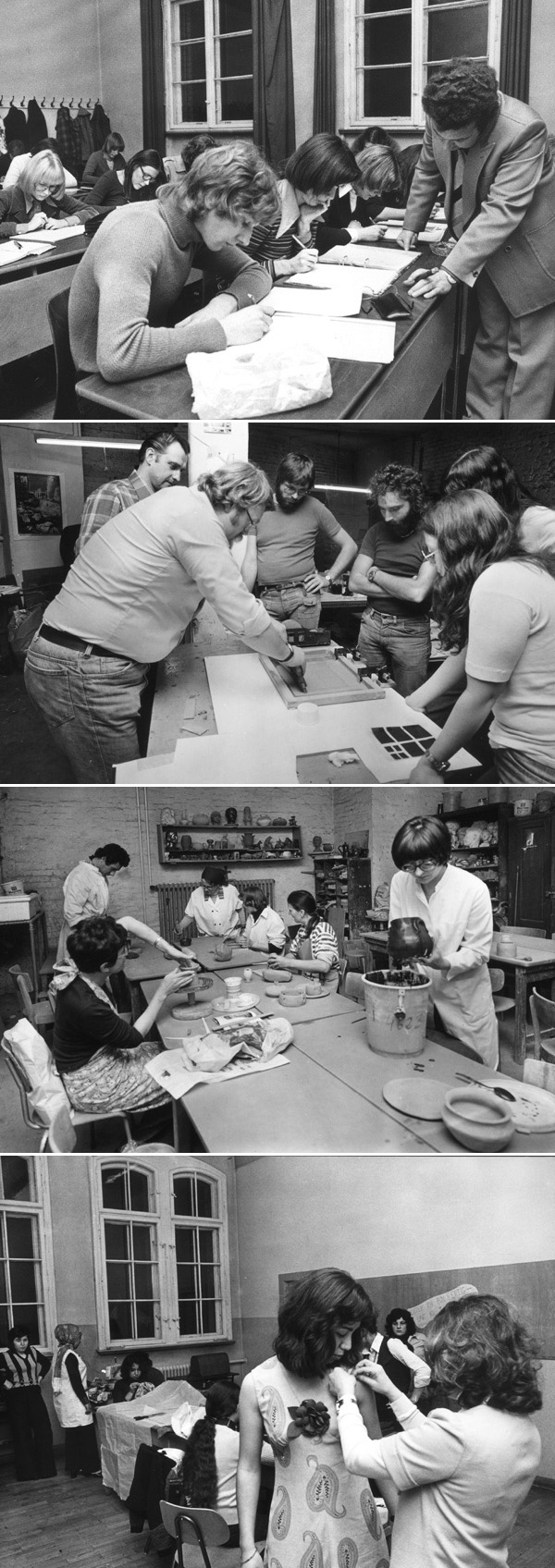













INTRODUCTION | DOCUMENTS | IMAGES | MAPS | EDITOR
|
In the mid-1960s, there was a paradigm shift – a so-called realistic turn – in West German adult education. Courses emphasizing occupational training assumed greater significance and were regarded as an important component of the curriculum, taking their place alongside classes that aimed to enhance students’ general education and their understanding of the political system. Adult Education Centers [Volkshochschulen] still stand at the heart of the adult education system today. In 1977, the year these photographs were taken, there were a total of 1,933 Adult Education Centers in the Federal Republic, 503 of which benefitted from community sponsorship. Today, Adult Education Centers usually receive the majority of their funds from the federal states and municipalities in which they are located. This allows their courses to be affordable to nearly everyone. As these four photographs suggest, Adult Education Centers offer a wide variety of courses. The photographs show (from top to bottom) working adults studying for their Abitur (the type of diploma required for university admission), a multi-part course on “Artistic Design and Craft” (two middle pictures), and a training course for tailors.
Courtesy of the German Information Center |
 print version
print version return to image list
return to image list previous image
previous image
